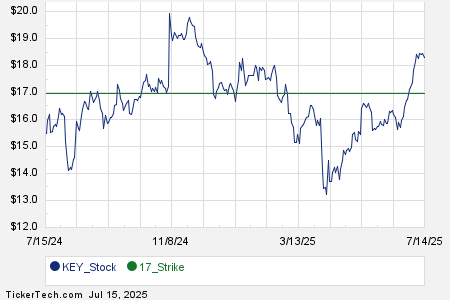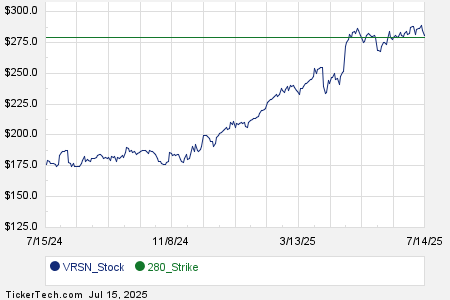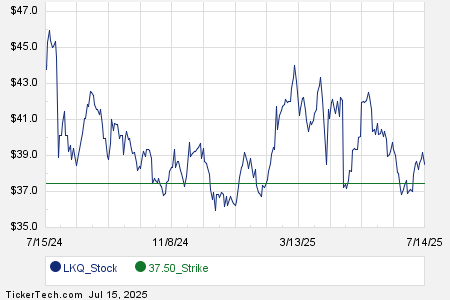Nine Stock Market Sectors Outperforming the S&P 500 This Year
Investors categorize stocks in various ways. Some focus on differentiating between growth stocks and value or dividend stocks. Others might sort stocks based on market capitalization, such as megacap, large-cap, mid-cap, and small-cap. A more formal approach uses classifications based on stock market sectors.
According to the commonly used classification system, there are 11 stock market sectors. As of this writing, nine sectors are outperforming the S&P 500 (SNPINDEX: ^GSPC) year-to-date (YTD). This raises questions about how this scenario is possible, considering that the S&P 500 is a major benchmark of the value of U.S. companies, yet it may not fully capture the market’s breadth.
Looking to invest $1,000? Our analysts have identified the 10 best stocks to buy right now. Learn More »
This article examines why so many sectors are exceeding the S&P 500 YTD, what this means for your investment strategy, and the importance of understanding the composition of exchange-traded funds (ETFs) or index funds before making purchases.

Image source: Getty Images.
Analyzing Sector Performance
In recent years, major U.S. companies have drawn the market higher, creating a more concentrated S&P 500. Notably, Nvidia (NASDAQ: NVDA), Apple (NASDAQ: AAPL), and Microsoft (NASDAQ: MSFT) account for 19.6% of the S&P 500. Adding Amazon (NASDAQ: AMZN), Alphabet (NASDAQ: GOOG) (NASDAQ: GOOGL), Meta Platforms (NASDAQ: META), Broadcom (NASDAQ: AVGO), Tesla (NASDAQ: TSLA), and Netflix (NASDAQ: NFLX) brings this total to 32.6% of the index.
These prominent firms fall within the technology, consumer discretionary, or communications sectors, which collectively represent 52% of the S&P 500. The technology sector alone accounts for an impressive 30.7%. Despite their dominance, several of these stocks, including Apple, Amazon, Microsoft, Nvidia, and Tesla, are trailing the S&P 500 YTD, contributing to the index’s overall performance decline.

^SPX data by YCharts
Conversely, leaders in other sectors have shown remarkable performance, enabling less weighted sectors to outperform the S&P 500 this year.

^IXV data by YCharts
Indications from Sector Trends
When previous market leaders start to lag behind benchmarks, many investors might view these stocks as overvalued. This may lead them to exit these positions in favor of more affordable growth stocks or to shift towards value and income stocks.
Jumping between sectors based on current performance trends isn’t advisable for most investors. It’s important to understand how a select few companies can influence the S&P 500 and to analyze the composition of an ETF or index fund before investing.
For instance, Meta Platforms and Alphabet combine to form an astonishing 48.5% of the Vanguard Communications ETF (NYSEMKT: VOX). Similarly, Amazon and Tesla represent over 40% of the Vanguard Consumer Discretionary ETF (NYSEMKT: VCR). In the case of the Vanguard Information Technology ETF (NYSEMKT: VGT), Apple, Nvidia, Microsoft, and Broadcom account for 48.3%. This highlights that purchasing a sector ETF often hinges on a small number of companies that predominantly dictate performance.
Many investors assume that buying an S&P 500 index fund provides widespread market exposure. However, the index’s diversification has diminished, particularly due to the substantial presence of large tech firms.
The largest 10 companies in the S&P 500 contribute 37.6% of the index. Furthermore, the top 25 companies represent 50% of the index. Consequently, just 5% of the companies are responsible for half of the S&P 500’s fluctuations. This indicates that strong performance in lower-weighted companies could be overshadowed by movement from the larger ones.
Understanding Concentration Risk in Your Portfolio
When selecting individual stocks, it’s vital to establish a clear investment thesis. This thesis should address the company’s strengths, its market valuation, competitive positioning, long-term potential, and how it aligns with your risk tolerance and investment goals.
In contrast, while investing in an index fund or ETF, you don’t need to grasp every single holding. Most investors seek these funds for broad exposure to the overall market, specific sectors, or trends.
Crucially, it’s essential to recognize how a fund may react under various market conditions and whether it complements your portfolio’s diversification or inadvertently increases concentration risk.
For example, if you allocate 10% of your portfolio to semiconductor stocks and are satisfied with that level, investing in an S&P 500 index fund might not add meaningful diversification since 7.8% of the index is already in Nvidia and Broadcom.
It’s also important to understand that your portfolio’s performance could diverge significantly from the S&P 500 if it lacks holdings in the index’s top companies. Therefore, evaluating your position against the index may largely reflect whether major tech stocks are in favor rather than the efficacy of your stock selections.
The influence of a limited number of companies introduces concentration risk to the S&P 500. For long-term investors, the choice to invest in the S&P 500 or major tech stocks can still be lucrative. However, awareness of concentration risk is crucial, particularly for risk-averse investors who rely on an S&P 500 index fund based on the assumption of broad diversification.
Key Investment Opportunities Await with ‘Double Down’ Recommendations
Unlock a Second Chance for Profitable Investments
Have you ever felt as though you missed out on the best investment opportunities? If so, this information is critical for you.
Occasionally, our team of expert analysts releases a “Double Down” Stock recommendation for companies they believe are poised for significant growth. If you think you missed your chance to invest, now is the ideal moment to act before it’s too late. The numbers support this assertion:
- Nvidia: Investing $1,000 when we issued our recommendation in 2009 would now be worth $323,920!*
- Apple: A $1,000 investment based on our recommendation in 2008 would translate to $45,851 today!*
- Netflix: If you had invested $1,000 when we doubled down in 2004, it could be worth $528,808!*
Currently, we are releasing “Double Down” alerts for three exceptional companies, and the opportunity to invest similarly may not arise soon.
Continue »
*Stock Advisor returns as of February 28, 2025
Randi Zuckerberg, the former director of market development and spokesperson for Facebook, who is also the sister of Meta Platforms CEO Mark Zuckerberg, serves on The Motley Fool’s board of directors. Additionally, John Mackey, the former CEO of Whole Foods Market, which is now part of Amazon, is also a member of The Motley Fool board. Suzanne Frey, an executive at Alphabet, holds a position on The Motley Fool’s board.
Daniel Foelber currently has no investments in any stocks mentioned here. The Motley Fool recommends and has positions in Alphabet, Amazon, Apple, Meta Platforms, Microsoft, Netflix, Nvidia, and Tesla. They also provide recommendations for Broadcom and specific options related to Microsoft. The Motley Fool adheres to a disclosure policy.
The views and opinions expressed herein belong to the author and do not necessarily reflect the opinions of Nasdaq, Inc.






